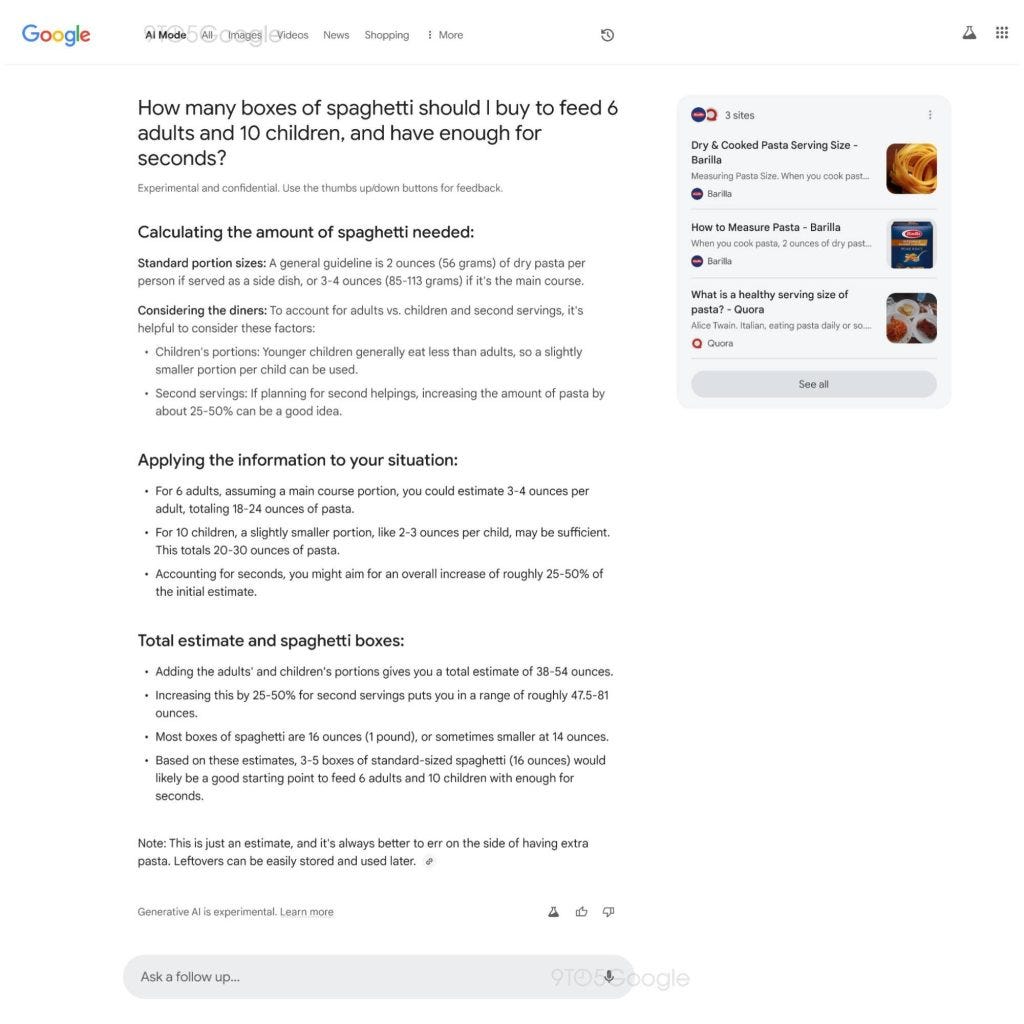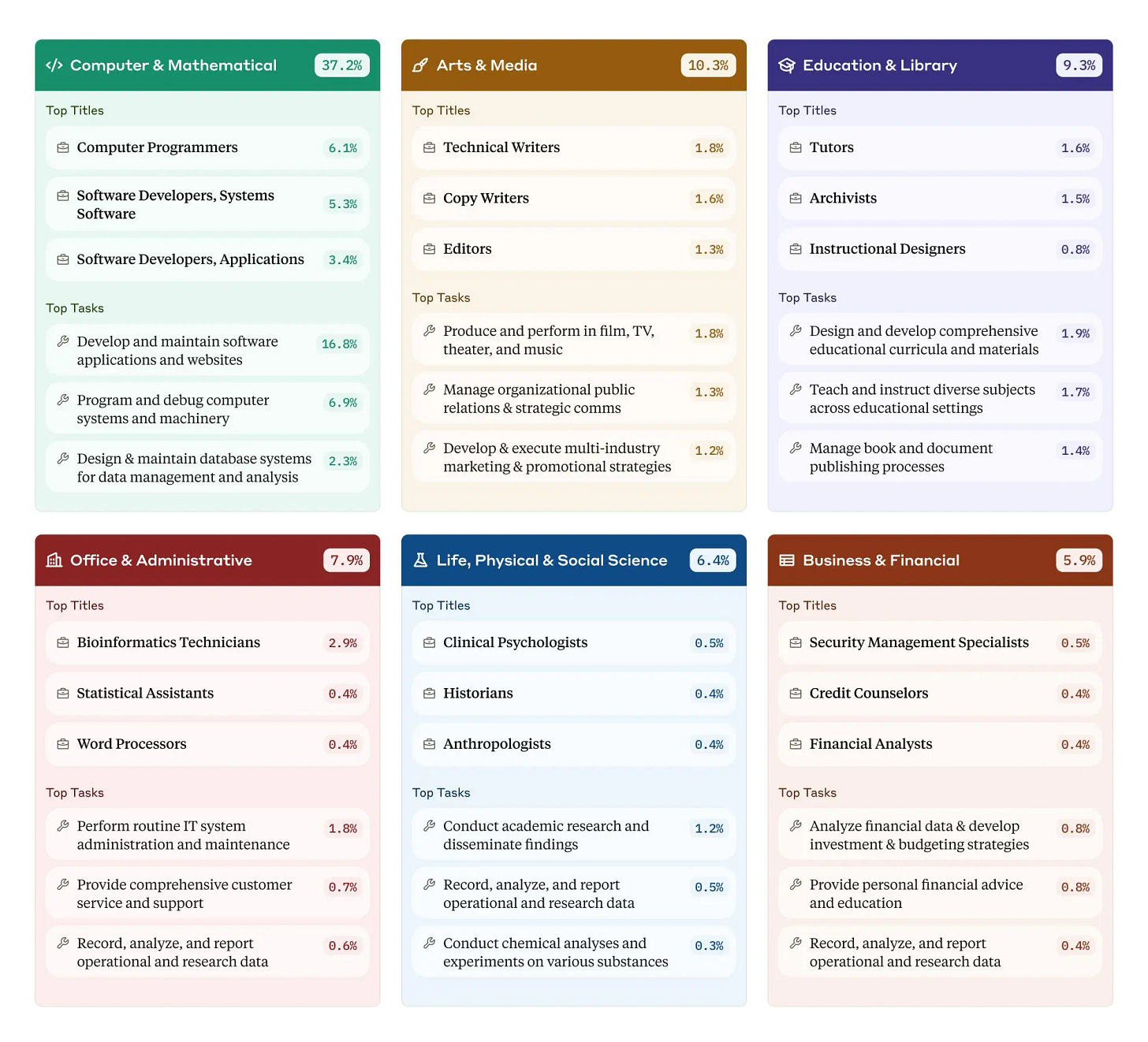el producto #423 🚀
Record-high AI spending, Apple robots, New Google search, Klarna crypto, Duolingo's Product handbook, How AI is redefining customer expectations and design & more
Hi folks 👋
Welcome to a new edition of el producto
🎰 The week in figures
$325B: Meta, Google, Microsoft, and Amazon collectively plan to spend $325B on AI and data center CAPEX this year:
Meta: $60-65B
Alphabet (Google): $75B
Microsoft: $80B
Amazon: $100-105B—Fun fact: AWS’ cloud now makes ~$100B/year, too
That’s a 46% jump from last year’s ~$223B splurge
$200B: The EU will spend $200B+ on AI, with $20B+ specifically for five new AI “gigafactories” that will each use 100K AI chips from the last generation
$16B: LinkedIn is now a $16B business - generating more revenue than the New York Times, Docusign and Zoom combined. 40% of subscribers have used AI features to improve their profiles
$10B: Musk’s xAI, a foundation model startup, is looking to raise about $10B at a valuation that could reach $75B
$5B: Saudi Arabia invests $5B in a DataVolt AI data center project, to create a digital hum in the futuristic smart city Neom
$5B: eToro has confidentially filed for an IPO with US regulators, aiming for a $5B valuation. This follows its $3.5B valuation in a 2023 funding round that raised $250M
$300M: San Francisco legal AI startup Harvey raised $300M Series D at a $3B valuation (x2 from July 2024). Harvey uses LLMs to assist lawyers and their teams with research, contracts, writing, and other organizational tasks
$160M: Tabby, the Saudi buy-now-pay-later platform, raised $160M at a $3.3B valuation, becoming MENA's most valuable fintech and setting the stage for an IPO
39%: Reddit’s daily active users grew 39% YoY to an average of 101.7M in Q4 (below estimates of 103.1M); Reddit says Google’s algorithm changes was partly to blame for this. ML translation drove 40-50% of international growth in Q4 and their CEO teased an expanded version of its AI-powered search tool, Reddit Answers (coming soon)
-5%: Meta is cutting 5% of its workforce with performance-based layoffs
📰 What’s going on
New Apple products:
4th gen iPhone SE budget model expected next week for $429
Apple's Powerbeats Pro 2 workout-designed earbuds in partnership with Beats were leaked
Apple is also exploring humanoid + non-humanoid robots for its smart home ecosystem, for 2028
And it’s delaying the next release of AR products to avoid a Vision Pro-style flop
Apple is working with both Baidu and Alibaba on the AI that will go on iPhones in China in non-exclusive deals, largely due to the government requiring Apple to partner with locals on AI for consumer use
Baidu will make its Ernie AI Chatbot free on April 1st now that the company has improved its tech and reduced costs—also, probably to keep up with DeepSeek
OpenAI CEO, Sam Altman, confirmed that OpenAI will not be releasing the highly anticipated reasoning model—o3—(first teased in December, with a mini version released just last month) as a standalone model, as expected, but will instead be shipping GPT-4.5 and GPT-5 in the coming weeks and months. Alongside o3’s reasoning capabilities, GPT-5 will also include Voice Mode, Canvas, Search, and Deep Research to “unify o-series and GPT-series models”
OpenAI removes content warnings. It has taken away the ‘orange-box’ warnings that flag when content ChatGPT produces might violate its terms-of-service. This change aims to reduce instances where ChatGPT unexplainably refuses to answer queries, allowing users to “use ChatGPT as they see fit” (as long as they aren’t breaking the law or causing harm to themselves or others). OpenAI has also updated its 63-page Model Spec (a set of rules that govern its models) to give models more freedom to respond to sensitive topics. This believed to have been done in response to political pressure
Snowflake, the data lake company that has posted impressive historical growth, is teaming up withAnthropic to “integrate Anthropic’s Claude 3.5 Sonnet model into Snowflake’s new Cortex Agents platform.” Anthropic needs to chart its own path to monetization and has leaned more on its API than its consumer offerings to drive revenue thus far
Google employees are reported to be testing out a new version of search called “AI Mode”. A leaked internal email suggests that the new mode will be a form of intelligent search embedded within Google Search that allows users to ask more “open-ended” and “exploratory” questions. From the leaked screenshots it looks a lot like the standard Gemini interface but built directly into search
YouTube’s CEO published his annual letter this week, and a few points stand out:
TV has surpassed mobile and is now the primary device for YouTube viewing in the US
After rolling out audio dubbing features, more than 40% of the total watch time of these videos now comes from viewers choosing to listen in a dubbed language
YouTube is expanding Dream Screen (which generates video backgrounds) and Dream Track (for instrumental soundtracks) for Shorts, with plans to integrate Google’s impressive Veo 2 video generation models soon
He also confirmed a major focus on practical AI tools that help with everyday creator tasks like generating video ideas, titles, and thumbnails, as well as a new AI-powered age estimation technology that can distinguish between younger viewers and adults
Klarna is getting ready to embrace crypto by exploring integration strategies, including adding crypto as a payment option and incorporating a crypto wallet feature into its mobile app, ahead of its anticipated IPO in April 2025
Lyft: reported underwhelming Q4 results and weak bookings guidance, as the company slashed prices to stay competitive. Revenue missed expectations at $1.55B, and gross bookings came in below forecasts at $4.28B. Lyft expects further booking slowdowns due to pricing pressures and the loss of its Delta partnership. Despite these challenges, it announced a $500M share buyback and plans to launch Mobileye-powered robotaxis in Dallas by 2026
📚 Good reads
How Duolingo works: 14 years of big learnings in one little handbook. The Duolingo team just published their internal handbook sharing how they build Product, hire, experiment, and build a brand around "wholesome and unhinged." Lots of good ideas to borrow/steal for your own team!
The Anthropic Economic Index. New research from Anthropic provides insights into AI's role in today's workplace. Analysis of millions of real-world AI interactions reveals that 36% of occupations now use AI for at least a quarter of their tasks, with adoption highest among mid-to-high wage professionals like programmers and technical writers. The data shows AI primarily augments human work (57%) rather than automates it (43%), suggesting a pattern of integration rather than replacement across the workforce
How AI is redefining customer expectations. In this Reforge blog post, Brian Balfour suggests that endlessly speculating about AI’s future impacts can paralyze Product teams. Instead, he argues we should focus on a set of more immediate—and critical—signals of shifting customer expectations. As AI enters workflows everywhere, what users consider “normal” in product experiences is changing fast: he identifies seven major expectation shifts, such as customers wanting AI to handle the “busy work” or deliver instant, hyper-personalized responses rather than waiting on manual processes. Through concrete examples, Balfour illustrates the fascinating ways AI-native products capture value in ways that leave traditional solutions looking outdated
8 design breakthroughs defining AI’s future. These 8 breakthroughs aren’t just clever UI decisions — they’re the first chapters in a new story about how humans and machines work together. Each represents a moment when someone dared to experiment, to try something unproven, and found a pattern that resonated. From ChatGPT making AI feel conversational, to Claude turning dialogue into creation, to Deepseek showing us how machines think — we’re watching the rapid evolution of a new creative medium. The pace of innovation isn’t slowing down. If anything, it’s accelerating. But that’s what makes this moment so exciting: we’re not just observers, we’re participants. Every designer, developer, and creator working with AI today has the chance to contribute to this emerging language of human-AI interaction
Pre-mortems: how a Stripe PM anticipates problems before launch. Pre-mortems ask the team to assume that the project has failed and you prompt the team to come up with the reasons for the failure before project execution begins. Shreyas Doshi explains how to run them step-by-step; including templates
[Video] The future of AI Agents at work. Bret Taylor, co-founder of Sierra and chairman of OpenAI, discusses what AI agents can do today, the future of conversational AI and how the business model for AI agents could evolve
That’s a wrap for this week! 🌟
I’d love to hear your thoughts—what stood out to you, and how are you thinking about integrating these insights into your product strategy? Reply to this email or drop a comment on Substack to share your take. And if you found this valuable, forward it to a fellow PM or product enthusiast who’d enjoy the read
See you next week! 👋
Angel







